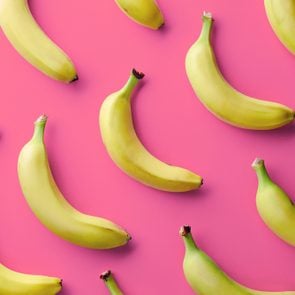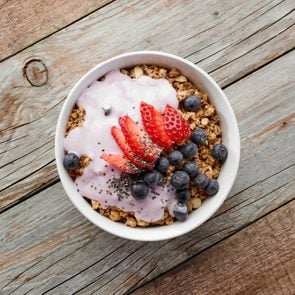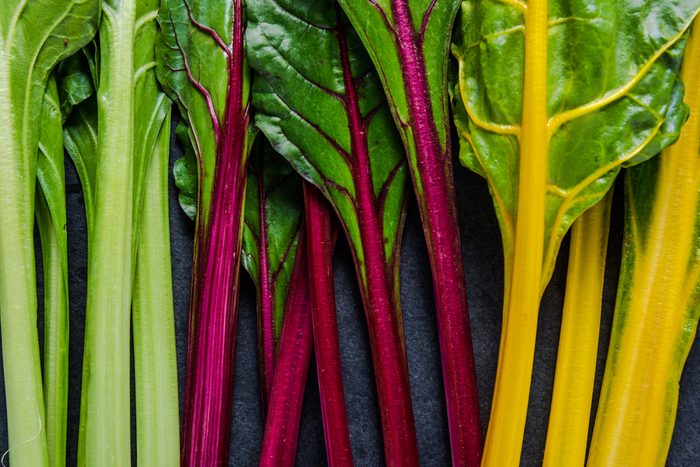11 Potassium-Rich Foods for a Healthy Heart, From Nutrition Experts
Updated: Jan. 14, 2022
If you're one of the millions of people keeping an eye on your heart health, experts say it can be as simple as eating more of these foods that you probably already love.
How your diet can reduce your heart disease risk
Heart disease (more technically referred to as “cardiovascular disease,” or “CVD” for short) is the leading cause of death among Americans. In fact, according to the Centers for Disease Control and Prevention (CDC), heart disease is responsible for about one in four deaths in the United States. The most common heart disease risk factors include:
- medical conditions, such as high blood pressure and high cholesterol
- lifestyle factors, like your activity level, alcohol use, and smoking
- having a family history of heart disease
While some of these factors are out of your control, you can make certain lifestyle changes to reduce your risk of developing heart problems. Specifically, science has identified a close relationship between diet and heart health. Researchers from Harvard Medical School found that for every two percent of calories we get from trans fats—like the fat in fried foods and baked goods—we raise our heart disease risk by a staggering 23 percent.
And, it’s not just about what you should remove from your plate, as more recent studies have highlighted foods with nutrients that can improve heart health. Potassium is a big one of those. In fact, a 2021 study, published in the New England Journal of Medicine and conducted by the American Heart Association and the National Institutes of Health, found that eating a potassium-rich diet can work to lower your cardiovascular disease risk.
If it seems like potassium is a mineral worth knowing a little more about, nutrition and medicine professionals have shared their wisdom right here. (Speaking of heart health, don’t miss these 5 surprising silent symptoms of clogged arteries.)
What does potassium do for your body?
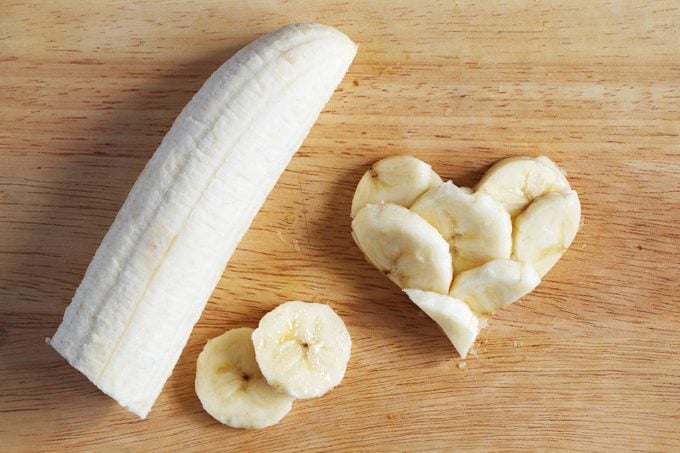
“Potassium is an electrolyte that, along with sodium, magnesium, and phosphate, helps regulate fluid balance at the cellular level,” says registered dietitian Linda Van Horn, PhD, a professor and the chief of the department of preventive medicine’s nutrition division at the Northwestern University Feinberg School of Medicine in Chicago, and member of the American Heart Association’s Nutrition Committee.
She explains that the mineral helps maintain osmotic pressure, a delicate balance that ensures our cells’ healthy function and communication.
Interestingly, potassium also conducts electrical impulses throughout the body, says Daniela Novotny, a clinical instructor of biomedical sciences at Missouri State University and doctor of healthcare science. That means it’s essential for nerve impulses, muscle contraction, and maintaining a regular heartbeat.
“Research has also shown that there is an inverse relationship between potassium and blood pressure,” says Siera Holley, a registered dietician nutritionist at The Ohio State University Wexner Medical Center. “This means that potassium, in appropriate amounts, can be beneficial in lowering blood pressure and preventing hypertension.”
Because high blood pressure is a major—but often silent—risk factor for cardiovascular disease, potassium may help promote long-term heart health.
Why does sodium matter for heart health?
Potassium has a unique relationship with sodium in the body, working together to regulate fluid balances, promote muscle contractions, and conduct nerve impulses.
The problem is that most of us eat too much sodium, throwing off the balance the body needs to support these processes. CDC data says that, on average, Americans consume 3,400 milligrams of sodium each day—one-third more than experts recommend.
Too much sodium can cause your blood to retain water and put pressure on your arteries, Holley says.
Here’s one place potassium comes in: getting adequate potassium in your diet can help filter out excess sodium, lowering your blood pressure to a healthier range.
Here’s how much potassium you need
If you’re like the average American, you’re probably not getting enough potassium each day. “The 2020-2025 Dietary Guidelines for Americans note potassium as one of four dietary components of public health concern, as the general U.S. population is under-consuming it,” Holley says.
The U.S. Food and Drug Administration (FDA) recommends adults aim to get 4,700 milligrams of potassium daily—though it sets the adequate intake at 3,400 milligrams for men and 2,600 milligrams for women. Still, CDC data found that the mean potassium intake among Americans falls well below recommended levels.
Most of us are consuming too much sodium, too. “The requirement for dietary sodium is very low, less than 500 milligrams per day,” Dr. Van Horn explains. The FDA advises we keep our sodium intake below at most 2,300 milligrams per day—though the average American eats about 3,400 milligrams daily.
Can you get too much potassium?
While too little potassium can elevate your blood pressure and put your heart health at risk, too much potassium can be a problem, too. For some people, dangerously high potassium levels in their blood can interfere with the body’s electrolyte-signaling, leading to an abnormal heartbeat.
This condition—called hyperkalemia—occurs when potassium builds up in your blood to dangerous levels, typically because your kidneys aren’t flushing out the mineral efficiently. That’s why it’s most often a risk for people with chronic kidney disease.
Still, according to the American Heart Association, other causes of hyperkalemia include:
- A diet too high in potassium (usually due to supplements and salt substitutes)
- Certain medications, including blood pressure-lowering drugs
- Existing conditions like diabetes or congestive heart failure
High-potassium foods: The list
While you should always talk to your doctor before making any change to your diet, many of us could benefit from some extra potassium on our plates.
Potassium is also available in supplement form, but experts advise that people avoid a potassium supplement unless their doctor prescribes it. Multivitamins often contain small amounts of the mineral—up to 99 milligrams per serving, according to Oregon State University’s Linus Pauling Institute—but more potent versions require close monitoring to ensure your levels are within a healthy range.
Fortunately, there are many ways to include more potassium in your diet. “The DASH Diet is a neat way of eating that has been shown to lower blood pressure,” Novotny says. (“DASH” is abbreviated for the “Dietary Approaches to Stop Hypertension” diet.) Novotny continues, calling the DASH diet “a plan that emphasizes foods rich in potassium (and other essential nutrients like magnesium and calcium) while lowering foods that are high in sodium.”
1. White Beans
Dr. Van Horn says that most legumes are rich in potassium, including peas, peanuts (unsalted!), lentils, and different types of beans.
White beans have an especially high content, with a whopping 1,540 milligrams per 100-gram serving. Legumes like white beans are also excellent sources of plant-based protein, B-vitamins, and iron.
For more on beans, read 50 Functional Foods for People With Diabetes.
2. Sweet Potatoes
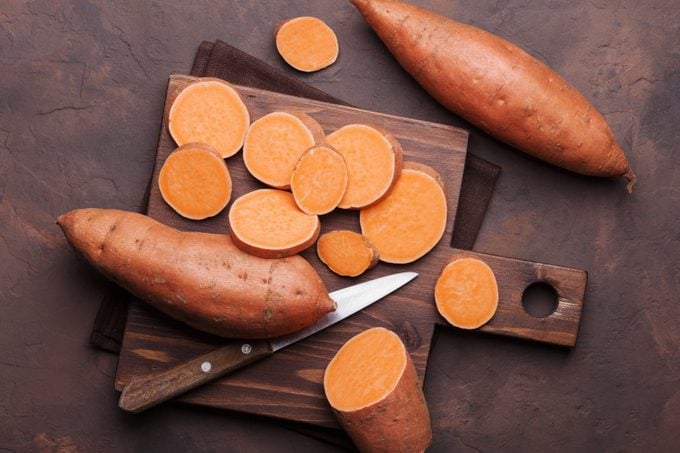
This healthy carb is versatile and full of nutrients like vitamin B6 and magnesium. A cup of mashed sweet potatoes also contains 950 milligrams of potassium, which is more than 20 percent of your daily requirement. Just make sure to eat it with the skin to get the root vegetable’s full nutrient load.
Worried that potatoes are high in starch that can make it tougher to slim down? Read This Is What Happens to Your Body When You Stop Eating Carbs.
3. Avocados
Avocado benefits are impressive. This fruit is a concentrated source of many nutrients, including healthy fats, fiber, and a huge range of vitamins and minerals. With about 690 milligrams of potassium in a single avocado, they also bring almost 15 percent of your daily potassium requirement to your plate.
4. Leafy Greens
Dark, leafy greens like spinach are great sources of potassium. A cup of cooked spinach can have up to 839 milligrams of potassium, as well as 60 percent of your vitamin A requirement. Other leafy greens like beet greens, kale, and mustard greens are also nutrient-rich potassium sources.
Inspired? Here’s more: 11 Benefits of Spinach That Will Convince You To Eat More Leafy Greens
5. Watermelon
Every juicy bite of watermelon delivers a great boost of nutrients, including vitamin C, copper, and vitamin B5. One wedge (about one-sixteenth of a full watermelon) also has 320 milligrams of potassium. (By the way? This is EXACTLY How to Pick Out the Perfect Watermelon.)
6. Coconut water
Toss back a glass of coconut water for an easy way to rack up about 13 percent of your daily potassium requirement. A one-cup serving has about 600 milligrams of potassium—in addition to magnesium, phosphorus, and calcium.
7. Cruciferous Vegetables
Cruciferous vegetables are a group of hearty, cabbage-like vegetables with nutrients—including potassium. Of these super-veggies, you can expect:
- 631 milligrams of potassium from a cup of bok choy
- 450 milligrams of potassium from a cup of Brussels sprouts
- 230 milligrams of potassium from a cup of broccoli
Cruciferous vegetables are also generally high in vitamin A, vitamin C, and folic acid.
8. Bananas
Most tropical fruits are a great source of potassium, but the banana leads the bunch with about 450 milligrams (almost 10 percent of your daily requirement)! And, if you don’t eat a banana every day, this might convince you to start.
Dr. Van Horn says that oranges and kiwis are also potassium-rich. These fruits happen to be high in dietary fiber, too, helping to promote great gut health and lower your cholesterol.
9. Orange juice
Citrus fruits are generally a good source of potassium. Experts suggest the juice concentrate offers an even more potent amount. With its 496 milligrams of potassium, a cup of orange juice in the morning will kick-start your day with more than 10 percent of your daily requirement. (But if you’re looking to support your immunity, also check out 9 Foods With More Vitamin C Than an Orange.)
10. Dried apricots
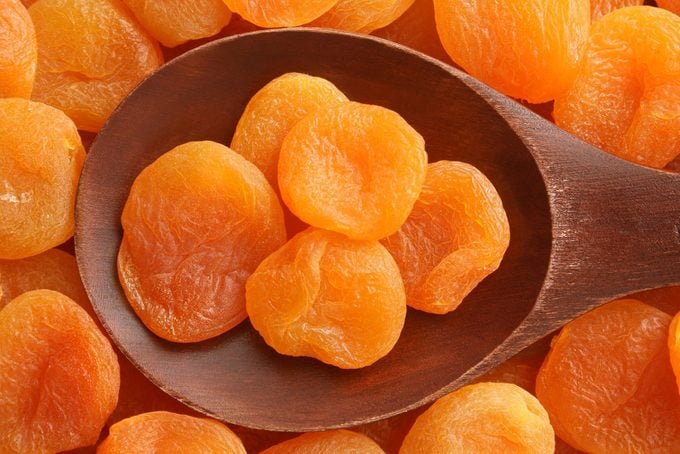
Whether you add them chopped to granola or smoothie bowls, arrange them on a cheese board, or grab a few for an on-the-go snack, a handful of dried apricots can net you about seven percent of your daily potassium requirement.
The average serving size—about 30 grams, or eight pieces—contains around 350 milligrams of potassium. The dried fruit is also rich in vitamin A, a nutrient essential for your vision and immune system. (Also read 15 Vitamin A Foods and How They Boost Your Health.)
11. Seafood
Most meats are good sources of potassium: 100 grams of chicken (with the skin) offers 292 milligrams and the same serving of ground beef has 302 milligrams. Still, certain types of fish edge these land-based options out—especially if you’re consciously trying to reduce the fat in your diet.
As examples, yellowfin tuna, cod, and halibut are all high-potassium fish choices. Salmon is also a winner: A 100-gram portion of salmon adds 490 milligarams of potassium to your meal, in addition to its heart-healthy omega-3 content.
And, if you really want to get the most out of your salmon, check out Which Type of Salmon Is Healthiest? A Registered Dietitian Reveals.




















